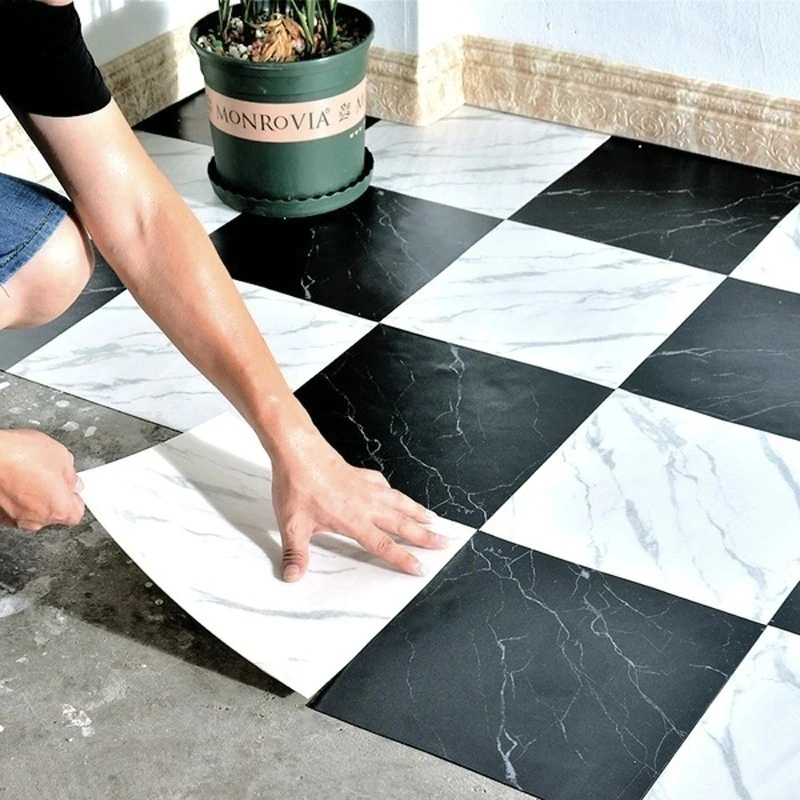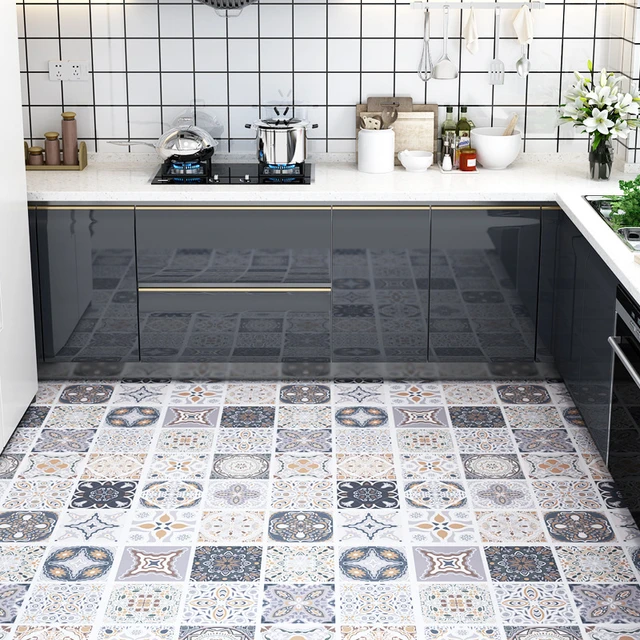 Introduction:
Introduction:
Choosing the best tiles for your kitchen floor is essential for creating a functional, durable, and visually appealing space. With a wide variety of tile options available on the market, it can be overwhelming to determine which ones are most suitable for your kitchen. In this comprehensive guide, we will explore different types of tiles that are considered the best for kitchen floors. By understanding their characteristics, strengths, and considerations, you can make an informed decision and create a beautiful and practical kitchen flooring.
 Here are some common options:
Here are some common options:
When it comes to choosing tiles for a kitchen floor, there are several types available, each with its own characteristics and benefits. Here are some common options:
Ceramic Tiles:
Ceramic tiles are a popular choice for kitchen floors due to their durability, water resistance, and wide range of design options. They come in various sizes, colors, and patterns, allowing for flexibility in design.
Porcelain Tiles:
Porcelain tiles are similar to ceramic tiles but are denser and less porous. They are highly durable, scratch-resistant, and suitable for high-traffic areas like kitchens. Porcelain tiles can mimic the look of natural stone or wood, providing a versatile and practical flooring option.
Natural Stone Tiles:
Natural stone tiles, such as granite, marble, slate, or travertine, offer a unique and luxurious look to kitchen floors. They are durable, heat-resistant, and can withstand heavy foot traffic. However, natural stone tiles may require sealing and regular maintenance.
Vinyl Tiles:
Vinyl tiles are an affordable and practical option for kitchen floors. They are water-resistant, easy to clean, and available in various styles, including patterns that mimic the appearance of ceramic or natural stone tiles. Vinyl tiles are softer underfoot, making them more comfortable for prolonged standing in the kitchen.
Cork Tiles:
Cork tiles are a sustainable and eco-friendly choice for kitchen floors. They provide a cushioned surface, are resistant to mold and mildew, and have thermal and acoustic insulation properties. However, cork may require regular sealing to prevent water damage.
Laminate Tiles:
Laminate tiles offer a cost-effective alternative to hardwood or stone floors. They are resistant to stains, scratches, and fading, making them suitable for kitchens. Laminate tiles come in a variety of styles that mimic natural materials, but they are not as durable as hard surfaces.
Engineered Wood Tiles:
Engineered wood tiles combine the natural beauty of wood with enhanced durability. They consist of a real wood veneer on top of a plywood or composite backing, making them more resistant to moisture and temperature changes than solid wood. However, they require proper maintenance to prevent water damage.
When selecting tiles for a kitchen floor, consider factors such as durability, maintenance requirements, moisture resistance, slip resistance, and the overall aesthetic of your kitchen. It’s important to choose a type of tile that meets your specific needs and complements the style and functionality of your kitchen space.
 Ceramic Tiles
Ceramic Tiles
Durability and Strength:
Ceramic tiles are known for their durability and ability to withstand heavy foot traffic and kitchen activities.
Made from clay and other natural materials, they are a dependable option for kitchen floors.
Stain Resistance:
Ceramic tiles are typically non-porous, making them resistant to stains and easy to clean.
Spills and food splatters can be quickly wiped away, ensuring a clean and hygienic surface.
Versatility and Design Options:
Ceramic tiles offer a wide range of design possibilities, from traditional to modern styles.
They come in various colors, patterns, and textures, allowing you to customize your kitchen floor to suit your aesthetic preferences.
Porcelain Tiles
Strength and Endurance:
Porcelain tiles are known for their exceptional strength and durability, making them an excellent choice for high-traffic areas like the kitchen.
They are made from fine clay and fired at high temperatures, resulting in a dense and sturdy tile.
Water and Scratch Resistance:
Porcelain tiles are highly resistant to water, making them suitable for kitchens where spills and moisture are common.
Additionally, they are resistant to scratches, ensuring that your kitchen floor remains looking pristine over time.
Low Maintenance:
Porcelain tiles require minimal maintenance, as they are easy to clean and do not require frequent sealing.
Regular sweeping and occasional mopping will keep them in excellent condition.
Natural Stone Tiles
Timeless Elegance:
Natural stone tiles, such as marble, granite, and limestone, exude a timeless and luxurious look in the kitchen.
Each stone type offers unique patterns, colors, and textures, providing a distinctive and elegant flooring option.
Durability:
Natural stone tiles are highly durable and capable of withstanding heavy use and foot traffic.
However, some stones may require periodic sealing to maintain their appearance and protect against stains.
Authenticity and Variations:
Each piece of natural stone is unique, resulting in a truly one-of-a-kind kitchen floor.
Embrace the natural variations and imperfections of the stone for a visually rich and authentic look.
 Here are some tips for pairing tiles with kitchen features:
Here are some tips for pairing tiles with kitchen features:
When considering the style and design of tiles for a kitchen, including cabinets, kitchen islands, and other elements, it’s essential to create a harmonious and visually appealing overall aesthetic. Here are some tips for pairing tiles with kitchen features:
Color Coordination:
Choose tiles that complement or contrast with the color scheme of your kitchen cabinets and kitchen island. For example, if you have white cabinets, consider tiles in shades of gray, blue, or warm neutrals. If you have dark wood cabinets, lighter colored tiles in beige, cream, or pastel shades can provide a nice contrast.
Material Match:
Consider the material of your cabinets and kitchen island when selecting tiles. If you have wooden cabinets, tiles with a natural stone or wood-like finish can create a cohesive look. For modern or minimalist cabinets, sleek, glossy tiles or metallic finishes can complement the style.
Pattern Play:
In terms of patterns, you can choose to match or contrast tiles with your kitchen features. For instance, if you have cabinets with a strong pattern or grain, opting for solid-colored tiles can balance the visual interest. Conversely, if your cabinets have a simple design, you can introduce patterned tiles for added visual impact.
Balance and Proportion:
Ensure that the size and scale of the tiles are proportionate to the size of your kitchen and its features. Larger tiles can make a small kitchen feel more spacious, while smaller tiles are suitable for adding detail and pattern in larger kitchens.
Textural Elements:
Consider incorporating texture through the choice of tiles to add depth and interest to your kitchen design. Subway tiles, mosaic tiles, or textured tiles can provide tactile appeal and create a distinctive look when combined with cabinets and kitchen island materials.
Cohesive Theme:
Aim for a cohesive theme throughout your kitchen design. The tiles should complement the overall style, whether it’s traditional, contemporary, farmhouse, or eclectic. Consistency in color palette, materials, and patterns will help achieve a cohesive and aesthetically pleasing appearance.
Remember to consider both your personal style preferences and the functional requirements of your kitchen when selecting tiles. It’s often beneficial to seek the advice of a professional interior designer or explore design inspirations to ensure a successful tile and kitchen feature combination.
Considerations and Maintenance
Slip Resistance:
Consider the slip resistance of tiles, especially for kitchen floors that may be prone to spills and splatters.
Opt for tiles with textured surfaces or those specifically designed to offer slip resistance.
Grout Selection:
The grout used to fill the gaps between tiles is an essential consideration.
Choose a grout color that complements the tile and consider using a stain-resistant or epoxy grout for easier maintenance.
Maintenance:
Regular cleaning is essential for preserving the beauty and longevity of your kitchen floor.
Follow manufacturer guidelines for cleaning and maintenance, including recommended cleaning products and techniques.
 Conclusion:
Conclusion:
Selecting the best tiles for your kitchen floor is a crucial decision that can enhance the functionality and aesthetic appeal of your space. Whether you choose ceramic, porcelain, or natural stone tiles, each option offers its unique benefits and considerations. Consider factors such as durability, stain resistance, and design versatility when making your decision. Additionally, remember to factor in maintenance requirements and consider the specific needs of your kitchen. With careful consideration and understanding of the different tile options, you can choose the best tiles for your kitchen floor, creating a beautiful, durable, and practical space for years to come.


